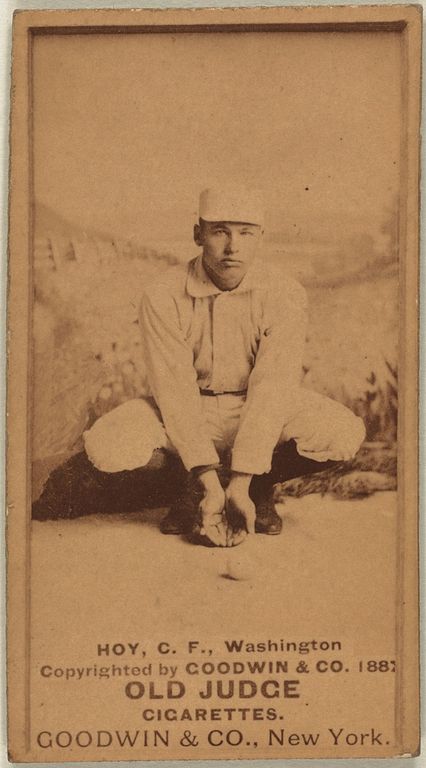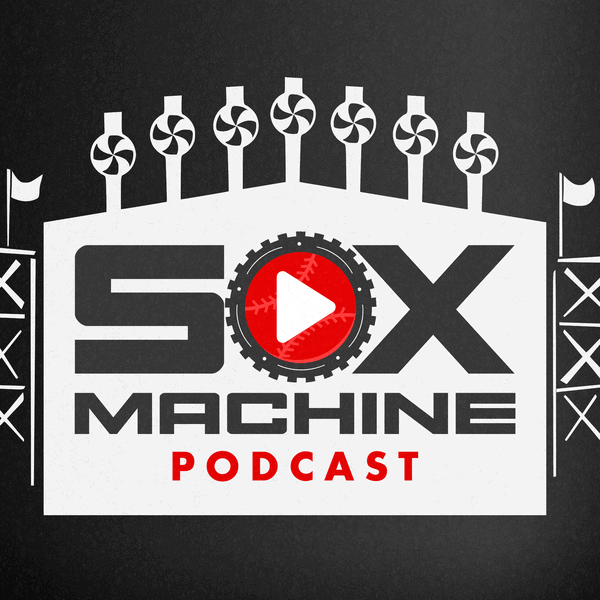Several weeks ago on a Sporcle Saturday, we took a look at center fielders in franchise history who were worth at least 2 wins above replacement. As I was compiling the names, one name which caught my attention was a center fielder from the 1901 team, Dummy Hoy. The 1901 season was the only one in which this player appeared for the White Sox (the 1900 minor league club notwithstanding), but it wasn’t too shabby: a .294/.407/.400 triple-slash, the .407 OBP boosted by a league-leading 86 walks and 14 HBPs, plus 155 hits (41 of which went for extra bases). In all, Hoy logged 4.7 WAR that season, good for 15th-most that season.
Now, I’d be less-than-truthful if I said that the statistics are what drew my eye. No, it was the name: “Dummy” Hoy. Like a lot of folks, I enjoy a good oldey-timey name and I assumed it was nothing more than that: as it turns out, though, there’s more to the story as there so often is. You see, Hoy’s given name was William Ellsworth Hoy. Born during the height of the Civil War on May 23, 1862 in Houcktown, Ohio, Hoy had the misfortune of coming down with a case of meningitis when he was just 3 years old which left him both deaf and unable to speak. In the parlance of the times, Hoy was “deaf and mute”, hence the nickname “Dummy”. Not the kindest of nicknames, to be sure, but Hoy himself went by it and evidently corrected people who referred to him by “William”.
In 1879, Hoy graduated as valedictorian of his class at the Ohio School for the Deaf and opened his own shoe shop. During the summer, the story goes, he played baseball in the streets with the local kids when a man affiliated with a local professional team recruited him to play. From there, he played in the Northwest League during the early part of the 1880s, eventually landing a position with a baseball team that brings this story to a personal level: the Oshkosh Everetts/Amateurs of Oshkosh, Wisconsin, where I currently live.
While it would be strange to see a semi-professional baseball team in Oshkosh today -- the city’s population is just about 70,000-- in the late-19th century, Oshkosh was one of the most populous states in Wisconsin thanks almost entirely to the booming lumber industry of the time. The Everetts --so named for Arthur Everett, the high school principal at the time-- began play in 1865, competing against other local clubs in the region. After disbanding in 1872, the Oshkosh Amateurs were formed by Sam Hay, Jr., in 1874, lasting until 1885 with a record of 37-9. In 1886, Oshkosh baseball turned professional, then had its most successful season in 1887 thanks in part to one-time lumber baron and otherwise local business magnate and philanthropist, Edgar Sawyer. From Oshkosh in base ball (1913):
Messrs. Edgar P. Sawyer, Joseph Porter, S.W. Hollister, and Leander Choate had become interested in the national game and resolved to place a winning team in the field for the season of 1887. Milwaukee, Minneapolis, St. Paul, Duluth, Des Moines and Oshkosh composed the Northwestern League.
Hoy played for the Oshkosh team in 1886 and 1887, leading the team to its only professional championship. I’m not sure how you make up a 14 game deficit, but it apparently happened to the 1887 ballclub:
The opening games resulted disastrously to the Oshkosh team. On July 4th, Oshkosh was 14 games behind the leader, Milwaukee. Two wins over Milwaukee on the last day of the season put the championship with the local team, Oshkosh nosing out Milwaukee by three points! This feat was remarkable --almost unequalled in the annals of baseball--...every man of the fourteen under contract played to win the championship.
In any case, the 1887 win was Hoy’s break to get time in the major leagues. In 1888 he signed with the Washington Nationals, then played for various other professional teams before four seasons with the Cincinnati Reds from 1894-1897. After two seasons with the Louisville Colonels, he signed with the White Sox for the 1900 (a minor league year) and 1901 seasons, played another season in 1902 with Cincinnati, then retired. Looking at his career on Baseball Reference: Hoy compiled over 2000 hits, 1000 walks, a career 110 OPS+, and 31.5 WAR. Sure, numbers this early in baseball’s history are a little sketchy, but I find it nonetheless remarkable that a man with Hoy’s handicap --playing during an era of society where he wasn’t likely to even get the chance to play-- found such success.
For further reading, I’d recommend SABR’s excellent biographical profile of Hoy, which I referred to extensively when summarizing his early life. You can find that here.
If you’d like to read more about the history of baseball in Oshkosh, the Wisconsin Historical Society has digitized the publication I referenced above, Oshkosh in base ball, available here.






